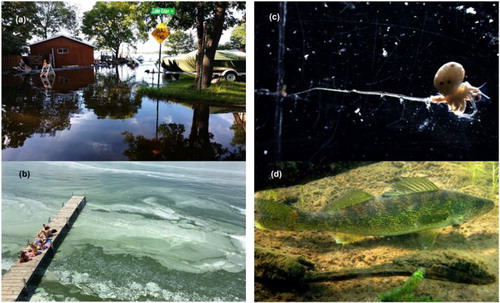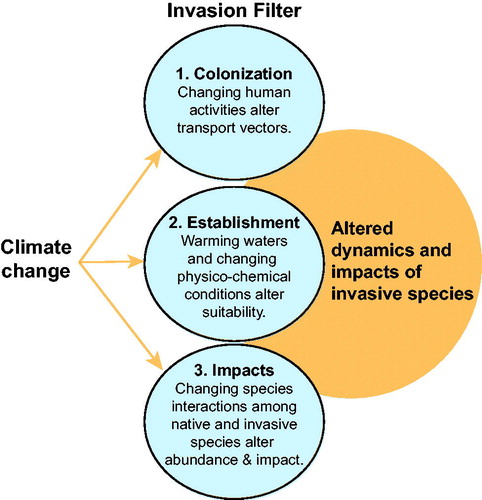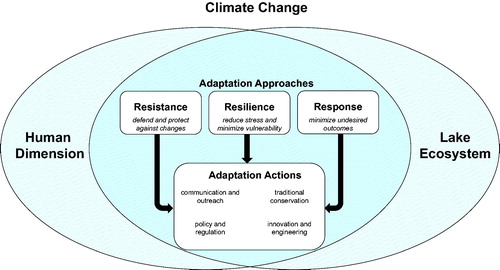Figures & data
Figure 1. (a) Lake levels: increased precipitation may cause flooding and property damage on some lakes (photo credit: Katie Hein); (b) water quality: increased runoff and warmer air temperatures will increase the frequency of harmful algal blooms on Wisconsin’s inland lakes (photo credit: Sarah Collins); (c) aquatic invasive species: climate change will make management of AIS, such as spiny water flea, more difficult in Wisconsin lakes (photo credit: Jake Walsh); (d) fisheries: changing temperatures are predicted to result in shifts in distribution of important freshwater fish, such as walleye (photo credit: Gretchen Hansen).

Table 1. Adaptation actions generated for each of the four workshop themes. Adaptation actions fall into four broad categories of communication and outreach actions, policy and regulation actions, traditional conservation actions, and engineering actions.
Figure 2. Climate change affects each step or filter of the invasion process. Here, we present an example of three potential invasion filters (colonization, establishment, and impacts) where climate change affects the underlying ecology of each filter. As each filter is altered, we expect to observe change in the dynamics and impacts of AIS. As a result, AIS will be more challenging to manage under climate change, particularly since each of these filters are directly linked and often will be changing simultaneously.

Figure 3. Conceptual diagram of a multi-faceted climate adaptation strategy for Wisconsin’s inland lakes. Resistance, resilience, and response are effective adaptation approaches when tailored to the local communities’ values and lake ecosystem. Each of these adaptation approaches can be achieve through adaptation actions that address communication and outreach, policy and regulation, traditional conservation actions, and innovation and engineering.

